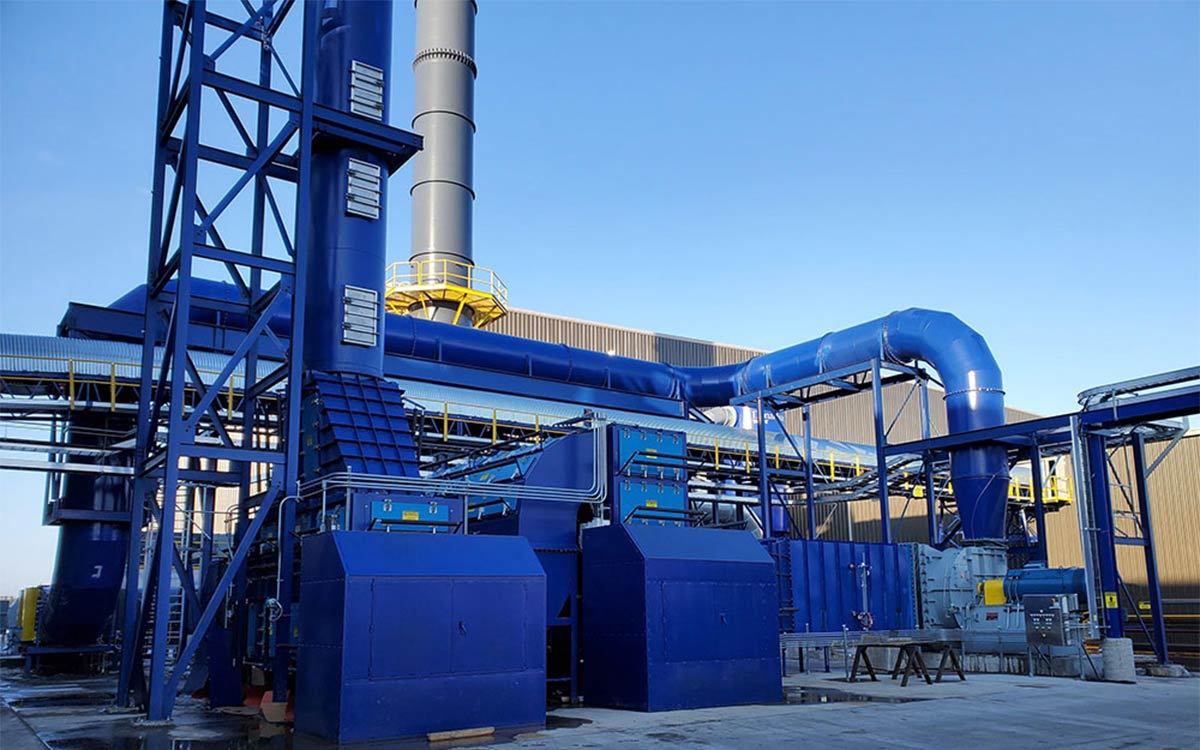
Background
WENDT Corp. is a leading comprehensive solution provider to the scrap metal recycling industry. In recent years, the EPA and state/local regulatory agencies have increasingly focused their attention on the air pollutants emitted from scrap metal shredding and recycling operations. This includes particulate matter, volatile organic compounds (VOCs), acid gases and other air contaminants. As WENDT recognized the need for an air pollution control solution for their scrap metal shredders, WENDT partnered with air pollution control expert APC Technologies.
Problem and Objective
Emissions of wet, oily dust and fluff, as well as very fine ‘blue smoke,’ are a regulatory concern when it comes to these scrap shredders. Those that shred autos in particular have agencies increasingly enforcing very low emission limits for particulate matter (Total Particulate Matter, PM10, and PM2.5). The particulate emitted from shredders includes oil, other hydrocarbons, water and other liquids that evaporate in the heat of the shredding process and then condense in the air exhausted from the shredder as it cools. These fine liquid droplets, combined with many forms of solid dust particles and fluff from the shredder, form a messy fine particulate problem. This requires high-efficiency removal of all particulate sizes, including submicron sizes.
Many shredders do not have a particulate matter control device installed. Among those with installed equipment, very few have the capability of removing the fine portion of the particulate matter emitted, which is a few microns in size and down into the submicron sizes. This fine portion of particulate matter can easily lead a shredder to fail a stack test for compliance. Additionally, it can lead to expensive fouling and premature replacement of downstream VOC control and other control equipment components, such as Regenerative Thermal Oxidizer (RTO) heat transfer media, activated carbon media, or other emission control equipment.
The objective is to meet the regulatory limits for particulate matter emissions applicable to the specific site and adequately protect downstream emission control equipment with the lowest cost (capital and operating) and lowest maintenance solution.
Options, Action and Result
Very low emission limits for particulate matter combined with the messy characteristics of shredder particulate reduce the options for particulate matter control. While a cyclone or drop-out box are usually effective for removing larger particulate matter as a pre-filter, these devices are unable to capture a sufficient amount of the fine and mid-sized dust and other particulate to meet regulatory limits. They are also not efficient enough by themselves to adequately protect downstream emission control devices.
When it comes to meeting the objectives of regulatory compliance with particulate emission limits while also having a lower-cost and lower-maintenance solution, there are only two viable technologies, both of which APC offers:
For shredder applications, APC strongly recommends installing the UHF® filter to control particulate matter emissions (with cyclone or drop-out box as a pre-filter). In the time since installing the first UHF® units on shredders 15 years ago, we’ve found the UHF® filters are also preferred by owners of scrap shredders, and for multiple reasons. Unlike the venturi scrubber, the UHF® filter is a dry unit. This means there are no major wastewater problems to manage, which can be very expensive to address. More importantly, the UHF® unit is more efficient at removing particulate matter, so it can meet all regulatory particulate matter standards, which is obviously crucial. If a venturi scrubber is installed and cannot meet the particulate standards, which has a high likelihood with many of the new, low emission standards seen across the industry, there is little that can be done to increase its efficiency without substantial additional capital and shredder downtime for a system retrofit. Even then, venturis are an older technology and have limits as to how small of particles they can remove. The higher fine particulate removal efficiency by the UHF® filter also means that downstream emission control equipment, such as the heat transfer media in an RTO or carbon media, will be much better protected from fouling and premature replacement. Additionally, the UHF® filter performs at much lower pressure drop than required by a venturi scrubber for the same removal efficiency. This results in lower energy requirements and operating costs. Finally, the UHF® unit offers fewer freezing concerns relative to the wet scrubber.
Since implementing this particulate matter control solution, WENDT’s emission testing has confirmed that the particulate matter removal performance of the UHF® filter is outstanding. This key component of WENDT’s complete auto shredder emissions control solutions will keep North American shredders in EPA compliance for years to come and sets a new standard for the scrap recycling industry.
With the UHF® filter as a key component, WENDT has the capability to furnish systems that can satisfy every regulatory requirement. WENDT provides their customers with a comprehensive solution, from permitting and installation and through the process of achieving environmental compliance.
For inquiries, please contact APC at 412.344.1870 or WENDT at sales@wendtcorp.com and 716.391.1200.